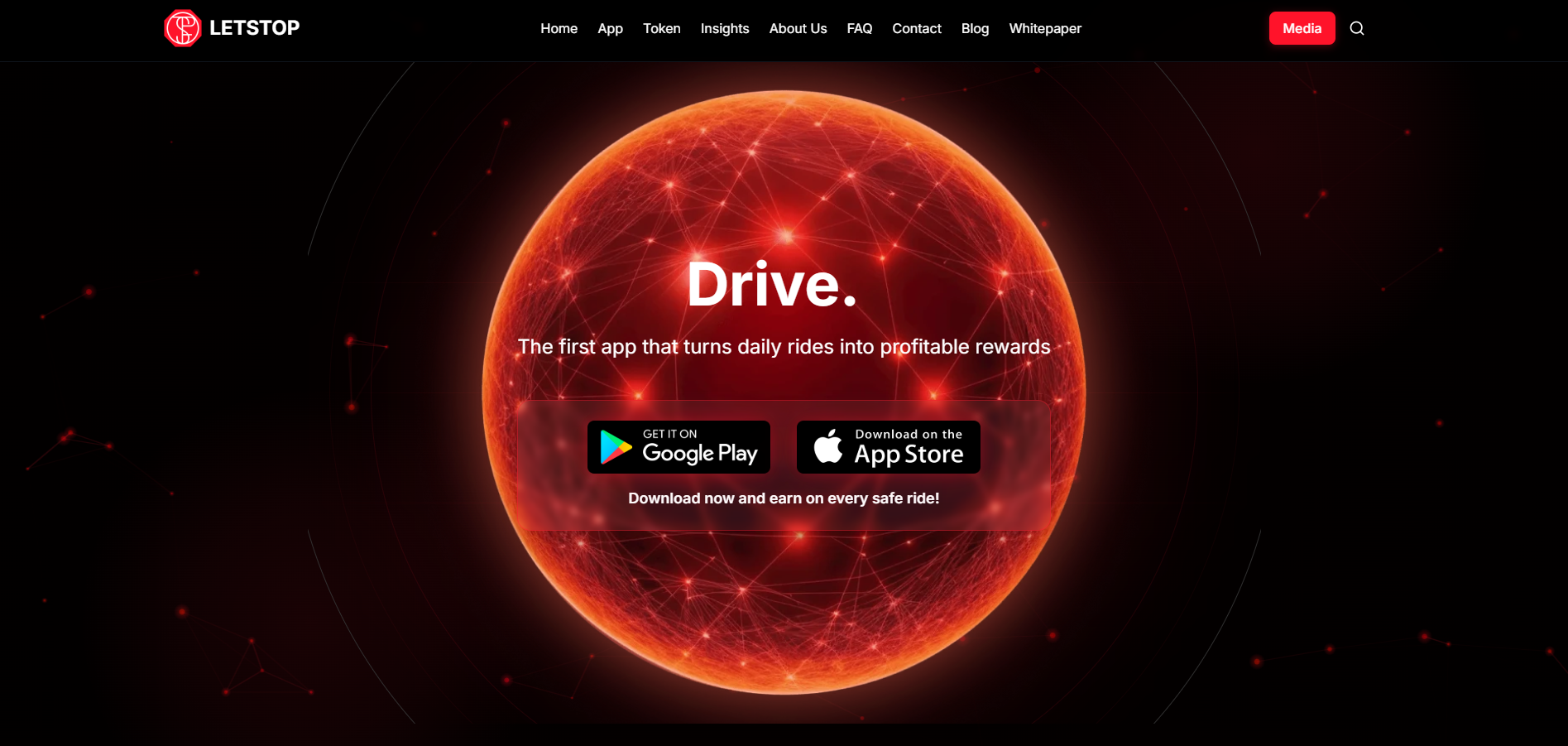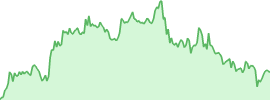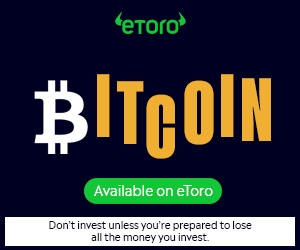
Chris: Welcome! Please tell us a bit about yourself and your background.
Almog: My name is Almog Nissan, and I’m the CTO and co-founder of LETSTOP. I’ve always had a passion for technology and innovation, especially in how we can use cutting-edge solutions to address real-world problems. After a life-changing personal experience, I was driven to create LETSTOP with my partner, Dor, to help combat distracted driving through technology.
Chris: Let’s start from the beginning — what was the “aha” moment that led you to combine road safety with blockchain rewards?
Almog: The “aha” moment came from a personal experience that changed my perspective entirely. One day, a police officer, distracted by their phone, ran a red light and crashed into my car. The accident caused significant damage and left me with severe injuries. It was a wake-up call. I sat down with Dor, my partner, and we started discussing how to address the growing problem of phone use while driving. We realized that while many solutions focus on punishing or penalizing drivers, there was an opportunity to incentivize safer behavior instead. That’s when we decided to combine road safety with blockchain rewards, which became the foundation of LETSTOP. The first app that rewards drivers for safe behavior, we could encourage people to stay focused on the road rather than distracting themselves with their phones.
Chris: LETSTOP uses motion tracking and AI to detect phone usage while driving. Can you explain how the app distinguishes between dangerous distraction and safe behavior (like using GPS)?
Almog: Currently, our app uses a unique technology that monitors any touch or movement on the phone's screen. If a driver touches their phone and is distracted, they will receive reduced rewards. However, if the driver behaves responsibly and no screen touches are detected during their drive, they will receive a high driving score, which is rewarded with LETSTOP credits. These credits can be redeemed for everyday rewards like fuel, flights, hotels, and more, or converted into our $STOP token, which is traded on major exchanges like BYBIT and MEXC. We’re planning to integrate AI in the future to further enhance the detection and accuracy of these behaviors.
Chris: You’ve implemented a dual system of XP and LETSTOP credits. What kind of psychological impact does this have on driver behavior, and how did you design it with gamification in mind?
Almog: The dual system of XP and LETSTOP credits was designed to motivate and engage users through gamification, tapping into the psychology of rewards and achievement. XP serves as a form of recognition for small milestones and consistent safe driving, which keeps users engaged in the process of improvement. LETSTOP credits, on the other hand, offer immediate rewards that users can redeem for tangible benefits. This combination creates a sense of progression (XP) and a clear incentive (credits) to drive safely. The psychological impact is significant because people are naturally motivated by achievement and rewards, and we designed the system to feel like a game, making safe driving not only a responsibility but a fun and rewarding experience.
Chris: LETSTOP credits convert into $STOP tokens. Why did you choose the Solana blockchain, and how does it support your goal of scaling globally?
Almog: We chose the Solana blockchain because of its incredible speed and low transaction costs, which are critical for supporting a global ecosystem. Solana allows us to scale without worrying about high fees, especially when it comes to small transactions, which is essential for a platform like LETSTOP that is meant to serve a broad user base. With Solana, we can ensure that users from all over the world can participate in the $STOP economy without encountering barriers due to high fees or slow processing times. Additionally, Solana’s decentralized nature aligns with our mission to create a transparent, secure system that users can trust. Solana believes in our project, which is why they awarded us a grant, and we are in daily contact with their team. We also received a grant from VeChain, further supporting the growth of our platform.
Chris: How do you envision $STOP evolving beyond the app — will it become a loyalty token for insurance companies, car rental firms, or EV manufacturers?
Almog: Yes, absolutely. $STOP is designed to have utility beyond just the LETSTOP app. We envision it becoming a loyalty token used in a wide range of industries, especially those related to mobility and road safety. For example, insurance companies could use $STOP to offer discounts or rewards to drivers who demonstrate safe driving behavior, while car rental firms and EV manufacturers could use $STOP as a loyalty currency for drivers who consistently follow safe driving practices. Ultimately, we want $STOP to be recognized as a valuable asset that can be used across various platforms, creating a safer and more rewarding driving ecosystem.
Chris: How do you ensure data accuracy — and protect user privacy at the same time?
Almog: We use data from the car’s onboard sensors, GPS, and other motion-tracking technologies to ensure that our measurements are as precise as possible. At the same time, user privacy is a top priority. All personal data is anonymized, and we comply with global privacy regulations, such as GDPR. We only collect the data necessary to provide users with meaningful insights into their driving behavior and offer them rewards based on that behavior, ensuring that their personal information remains protected.
Chris: How do you plan to work with insurance companies, governments, or NGOs to turn your data and user base into real-world road safety improvements?
Almog: We are actively working on partnerships with insurance companies, governments, and NGOs to turn the data we collect into actionable insights that can improve road safety. For example, we can provide detailed driving positive behavior data to insurance companies, helping them better assess risk and offer personalized premiums to users based on their actual driving habits. Governments and NGOs can use our data to identify high-risk areas on the road and implement targeted road safety initiatives. By sharing anonymized data, we can work together with such organizations to create safer driving environments while also ensuring that drivers are rewarded for their positive behaviors.
Chris: Your referral system rewards users for bringing others on board. How has that shaped the early growth of your community — and how do you ensure it's not abused?
Almog: Our referral system has been crucial in driving the early growth of our community. By rewarding users for bringing others on board, we’ve created a viral loop where each user becomes an ambassador for safe driving. This has allowed us to quickly expand our user base. To ensure the system isn’t abused, we’ve implemented several safeguards, including limiting the number of referrals a user can earn rewards for in a given period and ensuring that referred users are active within the app. We also monitor for any fraudulent activity to ensure that the system remains fair and sustainable for everyone.
Chris: You’ve hinted at multimedia integration and advanced driver assistance (ADAS) in future updates. Can you give us a sneak peek into what features are in the pipeline?
Almog: Absolutely! We’re very excited about the upcoming updates. One of the key features in the pipeline is the integration of advanced driver assistance systems (ADAS), such as real-time alerts for speeding, harsh braking, or lane deviations, which will enhance the driving experience and provide even more safety benefits to our users.
Chris: And finally — what’s your dream for the $STOP token? Is it just a reward mechanism, or do you envision it as a currency for a new kind of smart, safety-first economy?
Almog: My dream for $STOP is to see it evolve into much more than just a reward mechanism. I want $STOP to be a currency that drives a new, smart, and safety-first economy. In the future, we envision $STOP being used across various industries, not only for rewards within the LETSTOP ecosystem but also as a tool for driving safer behavior on a global scale. It could be used by insurance companies for discounts, by car manufacturers for loyalty rewards, and in many other areas where safety and responsible behavior are valued. Ultimately, we want $STOP to be seen as a currency that promotes positive social change and empowers individuals to take control of their driving behavior in a way that benefits them, the environment, and society as a whole. Additionally, we aim for $STOP to become a digital identity that reflects an individual’s driving score, showing exactly how they drive and serving as a reliable, transparent indicator of their driving habits.





 usdt
usdt xrp
xrp

